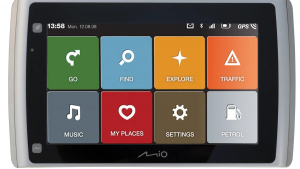5 Industries Where Robotic Process Automation Can Be Used


My Geek Score: Do you ever wonder what the manual workforce will look like after 50 years or so?
With the technological advancements, computers have replaced the humans in majority of the sectors like accounting, finance & more.
Therefore, the need for such technologies is continuously increasing, and those technologies have a specific name called automation software.
What is Automation Software?
Automation software is the software or systems that are processed to replace/ reduce the intervention of humans. That means machines will be handling all the work.
Robotic process automation is the newest addition and currently booming sector in the automation industry.
Robotic Process Automation:
Curious to know what does robotic process automation means?
Robotic Process Automation (RPA) means building and managing software bots. It can replace the human work of interacting with digital platforms at any given time.
In simpler terms, Software robots will be the working clones of humans. For example, identifying the screen content, rearranging the bills and stocks, big data reading and sorting & even more actions.
RPA Working:
But how does robotic process automation works?
For starters, the term “robot” in robotic means the software running on a physical or digital machine.
RPA is like a set command or instructions for a robot to do.
In maximum cases, RPA mimics human actions but the better. For example, deliver the work with 100% accuracy and better speed.
The most common application of RPA is doing repetitive work. Such as logging in the applications/ software/ systems, inserting data, copying of files or folders, and more.
While talking about any software, the first thing that comes to mind is the codes. Or is it necessary to learn them?
Are codes requiring running RPA?
The answer to this question is diplomatic.
You do not need to learn any programming language to get started with RPA.
On the other side, if you want to run an advanced RPA, you must get familiar with the “low code” trend. This is so because; RPA varies from “no-code” to “low code” trend. Plus, the RPA level also depends upon the user.
Until now, you have crystal knowledge of RPA, and it’s working. Now, it’s time to understand its benefits and usability.
So, first is RPA Usability:
There are several areas where RPA can be used. However, some are highlighted below.
By looking at some of the popular current applications of RPA, its usage is divided into categories. So, they are:
1. Business (retail), Finance and Sales
a. Comparing Prices
RPA can easily calculate the fluctuating prices of various products, which is very beneficial for extracting the best price for a specific product.
b. Invoices
Generating invoices and regulating the cash flow is quite hectic for humans. So, RPA is anyways faster than humans. So, by using RPA, you will be generating invoices faster, which means earlier payments and regulated cash flow.
2. Employee Reports
In every sector, employees must report to their seniors about the work done at the end of the day. This process consumes a lot of time also distracts the workforce from working. So, organizations are utilizing robotic automation here to analyze their work and e-mail their seniors.
3. Tech Support and Human Resources (HR)
a. Hiring employees
The hiring and onboarding of new employees are plenty of labor, including a hell of work. For example, generating new accounts, sending notifications and documents via e-mails, etc.
Therefore, many big companies are using RPA to automate the process and reduce the unnecessary burden on the human workforce.
4. Telecom, banking, Insurance, and Procurement
a. Data Migration
The legacy billing system is the perfect example of data migration, where it is mandatory to interact with the core system. In that case, the employees need to migrate the data manually & therefore increasing the work pressure.
Instead, if replaced with RPA robots, the entire process will be accomplished at a much faster rate and maximize productivity.
b. P2P
P2P is the procure-to-pay. P2P requires many manual tasks to extract the invoices and payment from various options like clients, vendors, banks & more. Therefore, replacing humans with RPA bots is highly appreciable to ease and save time.
5. Customer and owner relationship management
Onboarding customers
Consumer onboarding is the first process of customer period since the time they start using your products/ services. Many B2C firms also use RPA bots to maintain good relations with their buyers. For example, OCR (Optical Character Reader)
The key benefits of robotic process automation are a good point to understand that RPA must be having a productive fit and can’t be used everywhere.
Benefits of Robotic Process Automation
1. Efficiency
Many businesses undertaking automation projects claim that RPA enhances overall efficiency. This is so because; the RPA bots work faster and never take a stretch or coffee break, unlike humans.
2. Cost-effective
You might think that how the newest technology is cost-effective. Instead, it will burn the pockets.
Well, a single RPA bot is capable of handling multiple departments. So, that reduces the requirement of manual labor. So, eventually, RPA bots become more cost-effective in the longer run.
3. Flawless work
Machines exactly do what they are told. They don’t make efforts to get the work done, which is similar to RPA bots. Thus, it reduces the chances of errors.
4. Increased productivity
Since RPA bots can handle repetitive and manual work, it’s an excellent opportunity to divert the workforce into other valuable areas.
In addition, the lesser manual work keeps the mind fresh & active. So the room for creative ideas is always open. Therefore, both of them combined to enhance productivity.
5. Improved CX
Not only organizations but also customers benefit from automation bots. For example, if someone asks a query, there is no need to ask them to hold the call. Instead, the solution is given in no real-time. Hence, offering the best consumer experience.
6. Improved cyber security
The RPA admins can only manage rPAs secure systems. Also, it discourages the suspected, monitors activities, and prevents attacks. Hence, it provides cyber security.
Until now, you must be having a great understanding of Robotic Process Automation, its operational benefits use & more.
Since RPA is highly associated with computers and codes, people often tend to get confused between
RPA and Artificial Intelligence (AI) and ask like is RPA the same as artificial intelligence.
However, in reality, both of them are incredibly different.
Yet the scientists are working on providing the AI features in the RPA robots. The AI features that must be included in RPA bost are:
- Natural Language Processing (NLP)
- Image & character recognition
- Machine learning models
If RPA robots are fitted with AI features, then the operational capability of robots will be increased dramatically, such as:
- Understating & solving unstructured or under structured documents.
- Knowledge of digital screens.
- Excellent conversing skills.
- Facial recognition.
Follow My Geek Score on Medium.
Tags:
Robot Process Automation, What Robot Process Automation Means, How Does Robot Process Automation Works, Key Benefits of Robot Process Automation, Areas Where Robotic Process Automation Can Be Used, Is Robotic Process Automation The Same As Artificial Intelligence, Industries Using Robotic Process Automation






1 thought on “5 Industries Where Robotic Process Automation Can Be Used”